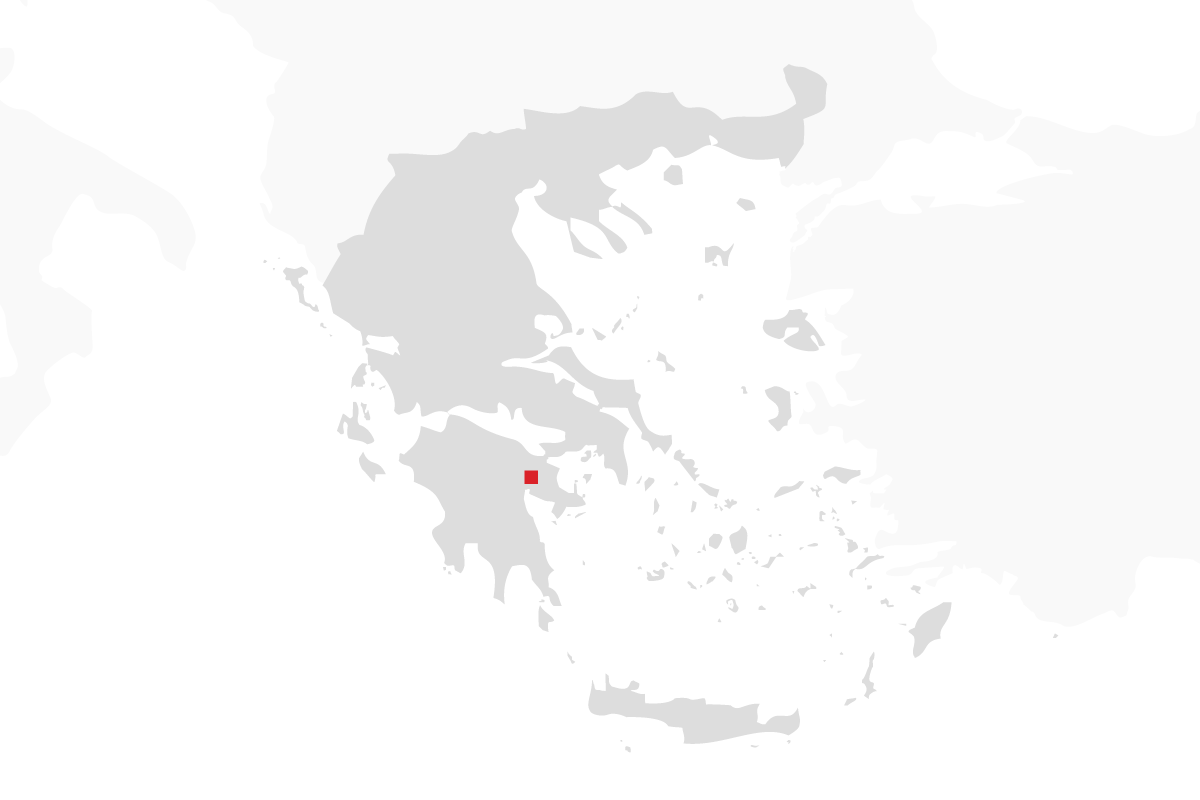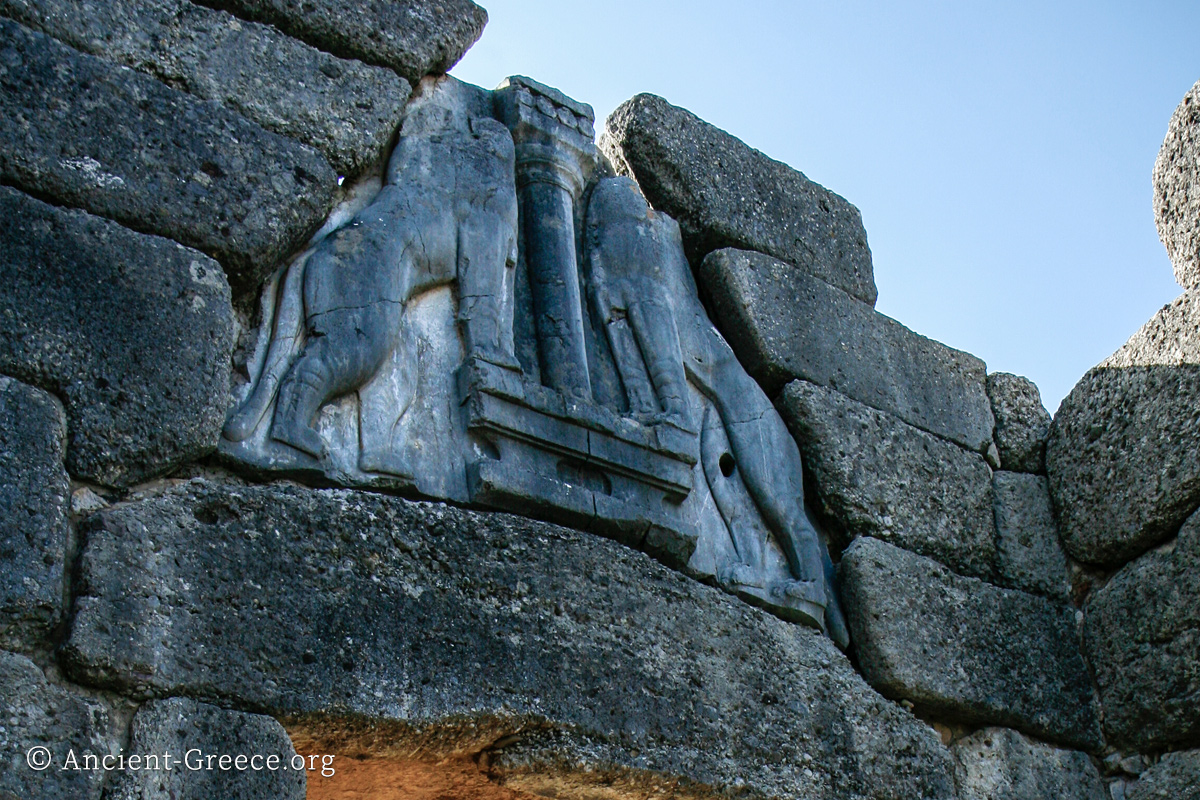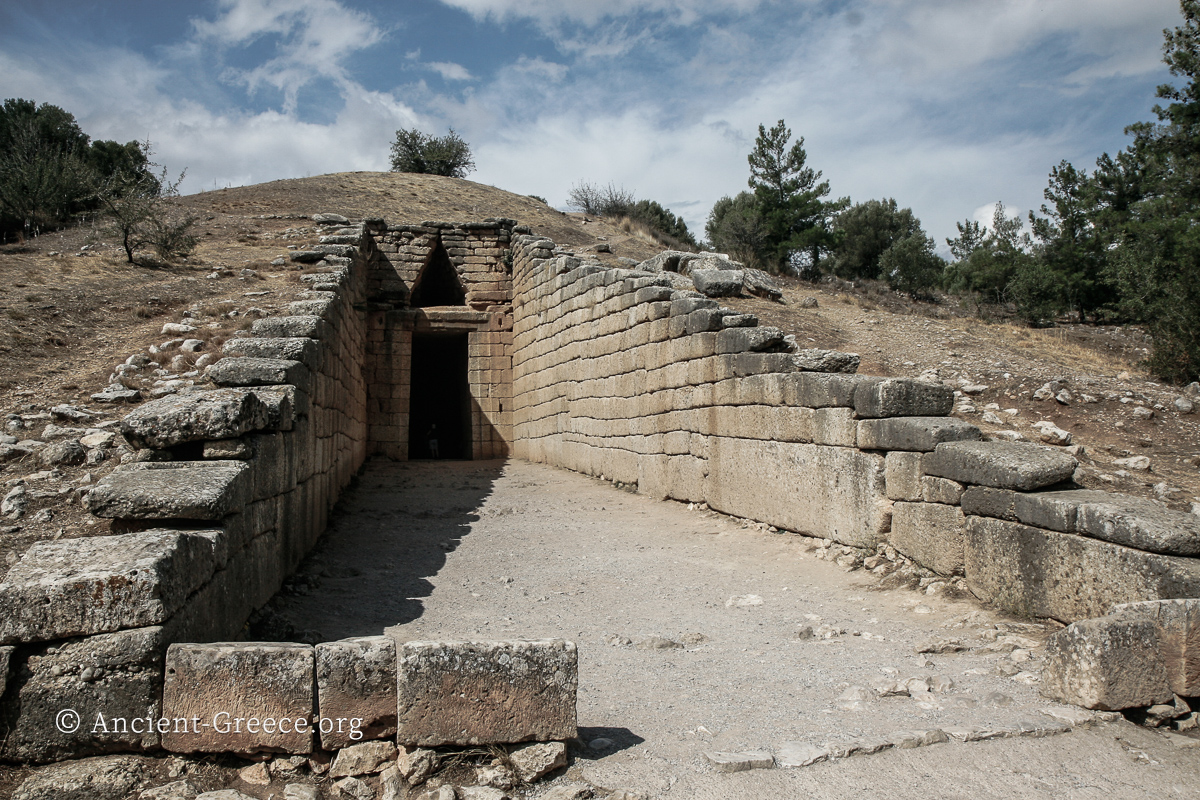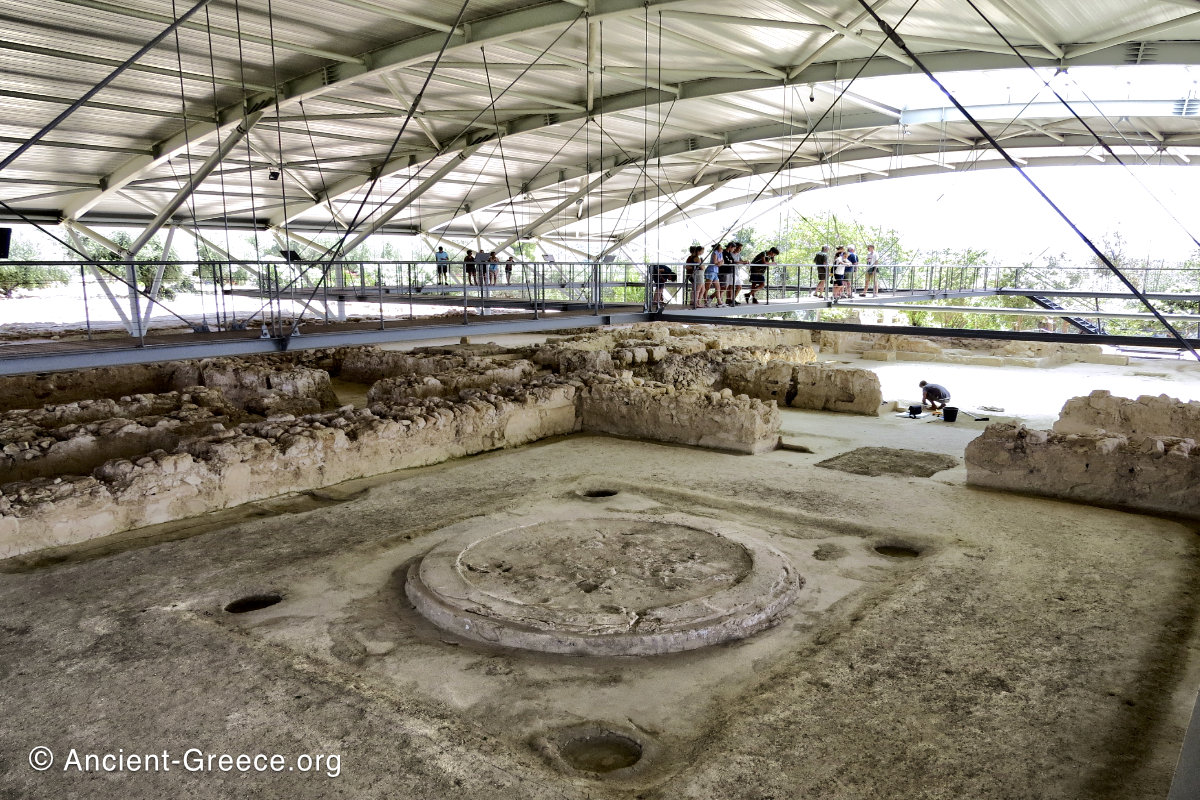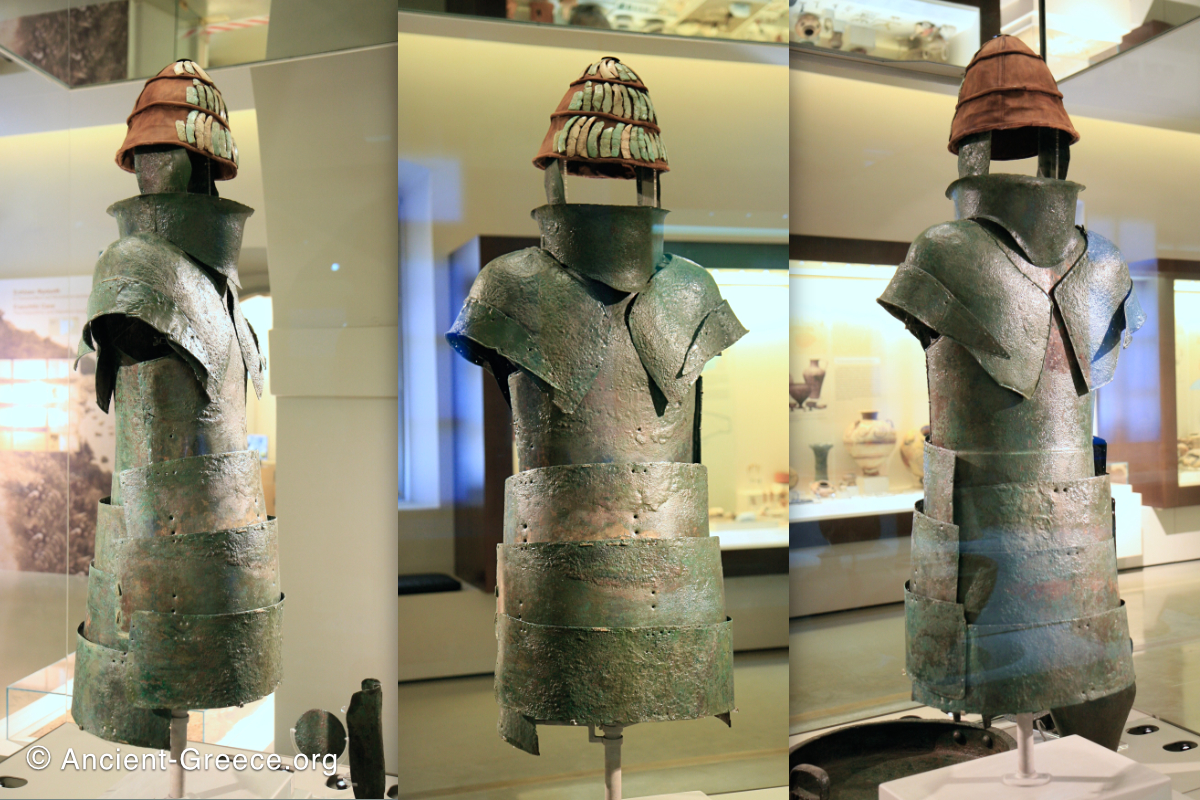
On this page:
Mycenaean is the civilization that dominated mainland Greece, the Aegean islands, and the shores of Asia Minor during the late Bronze Age era (circa 1600-1100 BCE). The Mycenaean Era occupies the tail end of the Helladic Civilization, which flourished in mainland Greece since about 3000 BCE.
Evidence from Linear B tablets indicates that Mycenaeans were the first “Greeks”. Their influence and power is most evident in the robust citadels and palaces, in the grand royal tombs, and in the extraordinary grave goods that included luxurious jewelry, bronze weapons, and vessels of all kinds.
Some of the most prominent Mycenaean centers include Mycenae, Tiryns,, Pylos, and Athens
The Mycenaean Civilization
Many archaeological sites, cemeteries, and Tholos Tombs of the era have been unearthed throughout Greece, and the discovered artifacts speak of a people with strong cultural presence, a centralized administrative system with a king (ἄναξ), at the top, with strong commercial ties to the rest of the Bronze Age Mediterranean centers, and a militaristic attitude.
Their extensive contact with the mainland Helladic and Mediterranean cultures (Minoan, Cycladic, and Levantine) allowed for the development of a unique cultural identity that’s evident in their legends, art, and architecture. Archaeological and tablet evidence indicates that the Mycenaeans dominated the area around the Aegean sea and assimilated the diverse amalgam of local people of the eastern Mediterranean into a homogeneous culture.
The vast majority of the funerary artifacts unearthed (beginning with Heinrich Schliemann’s excavations in Mycenae in 1870s)are made of precious metals, such as gold, silver, and bronze, as well as precious stones and crystals like lapis lazuli which originated in central Asia. They traded mainly oil and ceramic vessels and imported “Anatolian or Caucasian tin and Syrian ivory” (Vermeule, 255). They also manufactured and traded weapons and tools with the raw materials they imported, and there are indications that they were involved in mercenary wars and even piracy.
The Mycenaeans used a syllabic script (Linear B) that is the earliest form of Greek, attesting to the continuity of the Greek civilization from the early Bronze Age era. The script was deciphered by Michael Ventris in the 1950’s.
Their influence and power is most evident in the magestic citadels and palaces, in the grand royal burials, and in the extraordinary grave goods that included luxurious jewelry, weapons, and vessels of all kinds.
Mycenaean artistic output is generally characterized by an austerity of decoration, symmetrical composition, repetition and disciplined formal arrangement, with limited subject matter that depicts mostly nature, hunting, and war scenes. The sculpture can be safely considered “crude” in execution, consisting mostly of low relief stone carvings, but the craftsmanship of their decorative arts is exceptional.

The “Lion Gate” relief carvings of lionesses represent one of the earliest monumental sculptures in Europe that we know of. Its subject matter and iconography also shows close ties with the Minoan civilization.
In terms of written records, Mycenaeans have left us with countless Linear B tablets which almost exclusively contain catalogues and official records of a very stout bureaucracy which itself denotes a complex political and economic organization that was uniform throughout their area of influence.
The Linear B tablets, written in an early form of Greek (Mycenaean Greek), mention several deities who appear later in classical mythology. Names such as Zeus, Poseidon, Athena, Hera, Apollo, Ares, Dionysus, and possibly Hermes, among other, appear in administrative contexts from sites like Knossos, Pylos, Thebes, and Mycenae, dating from roughly 1450–1200 BCE.
Many of the legends of Ancient Greece have their origin, and refer to the this late Bronze Age Era we call “Mycenaean”. Heroic deeds like the dynasty of Atreids, the labors of Hercules, the Trojan war, the Thyestian Feast, and Agamemnon’s tragic life and death, are rooted in the Mycenaean era.
The End of the Mycenaean Era
The end of the Mycenaean civilization began in 1200 BCE and lingered until the middle of the 11th c. BCE. The causes of this end have been debated for the last two centuries, and while several theories have emerged as dominant, no definitive answer has emerged to date. Among the most credible theories is the emigration of Dorians and Heraclids (tribes that lived hitherto in central Greece) which destroyed all the Mycenaean centers (Athens was the only one that survived), and the hypothesis that social upheaval from within forced the civilization into decline. The Sea People that decimated the shores of the eastern Mediterranean at that time are also credited with direct or indirect involvement in the demise of Mycenaean civilization, with some scolars indicating that the Sea People might have been Mycenaeans forced to flee their invaded homeland.
Naturally, a combination of the above theories has also been suggested as the cause for the disappearance of the Mycenaeans. No matter what the cause, the effects of this rapid decline were devastating and resulted in what we consider to be the Greek Dark Ages when population declined dramatically, major cities ceased to exist, and literacy disappeared for the next three hundred years.
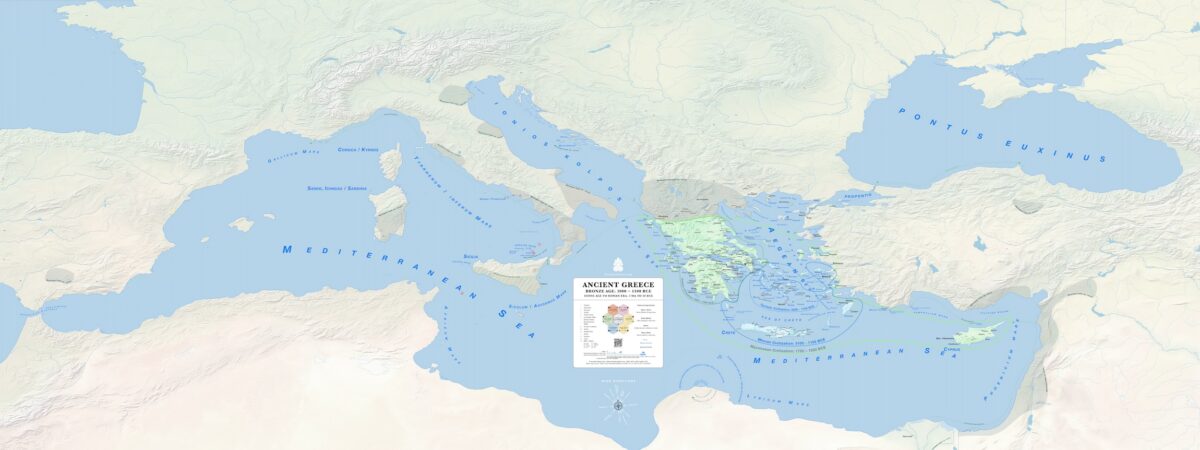
Related Pages
Photos of Mycenaean Artifacts
